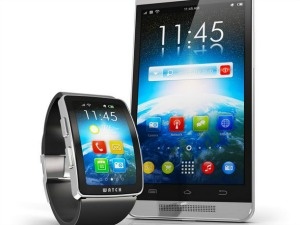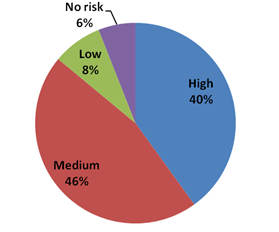 It is easy to categorize wearables in the enterprise as simply a variation or next step in Bring Your Own Technology (BYOD), but in reality it is a bit more complicated. While clearly enterprise wearables and BYOD overlap, wearable is a distinct category with its own dynamics and should be thought of differently from non-wearable BYOD.
It is easy to categorize wearables in the enterprise as simply a variation or next step in Bring Your Own Technology (BYOD), but in reality it is a bit more complicated. While clearly enterprise wearables and BYOD overlap, wearable is a distinct category with its own dynamics and should be thought of differently from non-wearable BYOD.
Compelling use cases are still elusive in the consumer market, but enterprises have been quick to grasp the potential of wearables. At the shallow end, wearables can enhance productivity by keeping employees connected. Going to a deeper level, hands-free devices that respond to voice commands and employ built-in cameras will transform the workplace for many professionals.
Glasses, watches, and body monitors all hold the potential of becoming powerful applications for the workplace. Enterprise wearable is expected to become a business that will drive the growing trend of wearables moving beyond BYOD and adopting WYOD (wear your own device). The market for company-provided wearables will be larger than the consumer market in the next five years, because the number of jobs where people need to be able to work hands-free is vast.
However, wearable computing is distinct from the first iteration of BYOD. The enterprise sector will lead this time, and consumers may or may not follow. The hardware used for enterprise wearables will be similar to what is used for consumer devices, but not identical. For instance, a wearable to be used in areas where combustible fumes are common must be engineered to ensure that under no circumstances the device will be able to generate a spark.
Certain industry verticals, such as manufacturing within certain industries, are likely to skip a step or two as the merits of wearable devices are more obvious and/or there may be limited usage of existing devices due to the need for hands-free. Examples include production line environment in which workers must use both hands a minimum of 90% and healthcare workers that require access to critical alerts/information (e.g. cannot afford to misplace a non-wearable device).
Mind Commerce conducted a recent survey on BYOD in the workplace that consisted of 102 respondents, primarily U.S. based, with a breakdown of 55% US, 32% European, 11% Asian, and 2% other. As exhibited in the chart below, security remains an overarching concern, with 94% of respondent’s opinion being that using personal devices in the workplace carries potential risk for them.

Learn More
Mind Commerce's report, The Future of Enterprise Wearables: U.S. Enterprise Wearables Market Opportunity, Key Trends, Use Cases, and Industry Indicators, is a joint research effort by Compass Intelligence and Mind Commerce that focuses solely on the enterprise wearable market. This research estimates sales revenues of over $405 million in 2015, growing to over $8 billion by 2019. This report evaluates the workplace wearable marketplace, including market segments, forecasts, end user research, use cases, and other insights around this bustling area of the industry.
Interested in more on the Wearable Technology industry? Check out MarketResarch.com's Mind Commerce Knowledge Center Solution!
Editor's Note:
The blog post is collaboratively written by members of the Mind Commerce staff.
About Mind Commerce:

The Mind Commerce® mission is to provide customized research, consulting, training, and writing services for the telecommunications and IT industry. Mind Commerce clients include manufacturers, developers, service providers, industry organizations, and government. Mind Commerce differentiates itself from its competition by meeting the unique needs of its clients through customized product development and service delivery.
Mind Commerce is also available on Profound.com...
Purchase individual report sections for a pro-rated price. Visit Profound.com to learn more.


